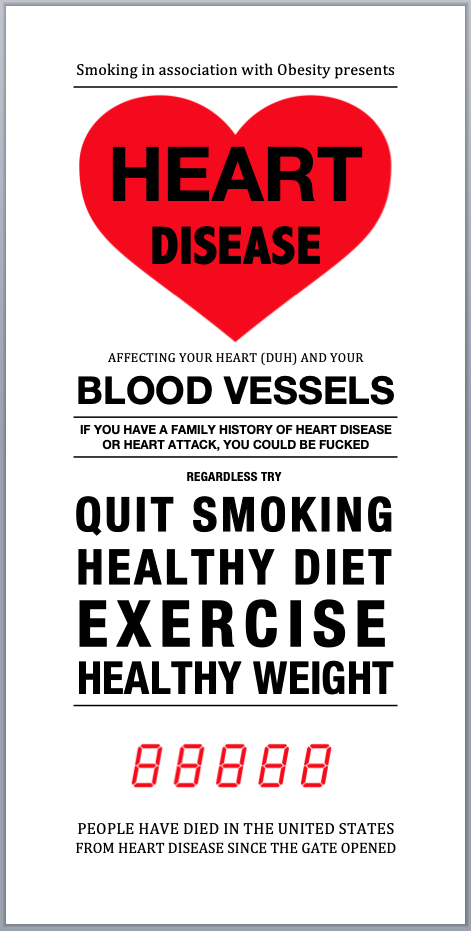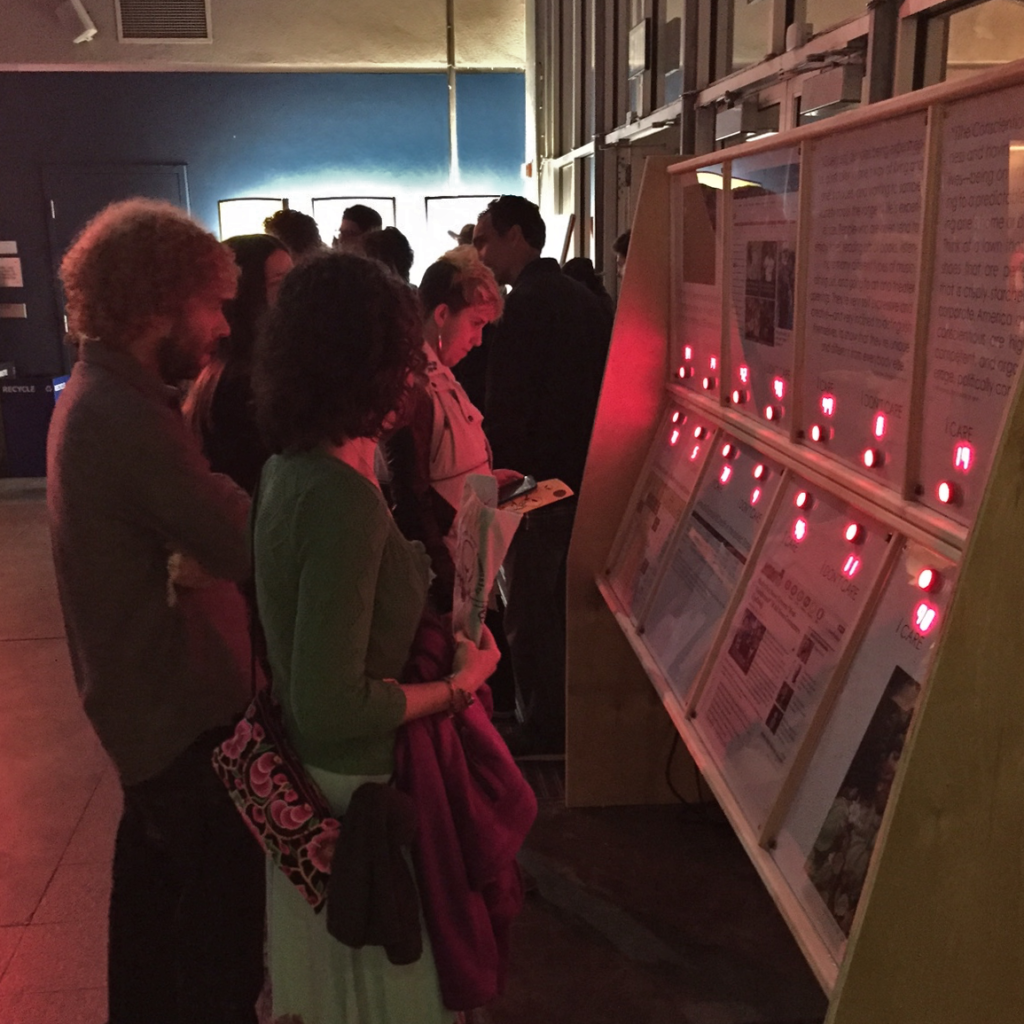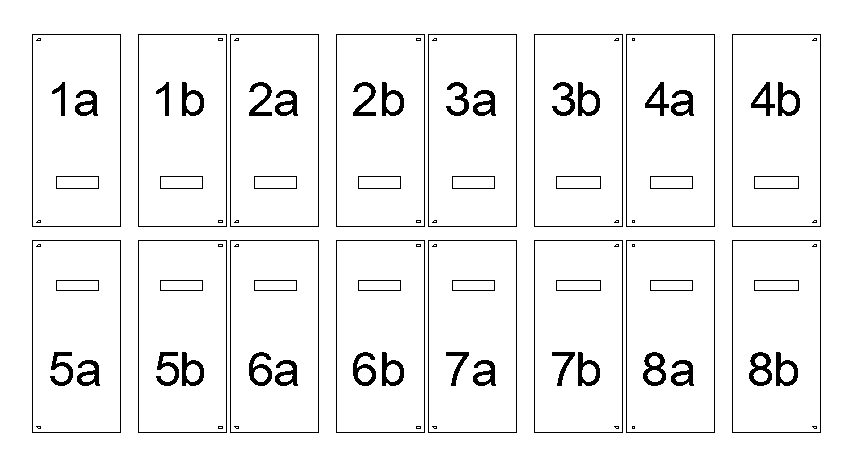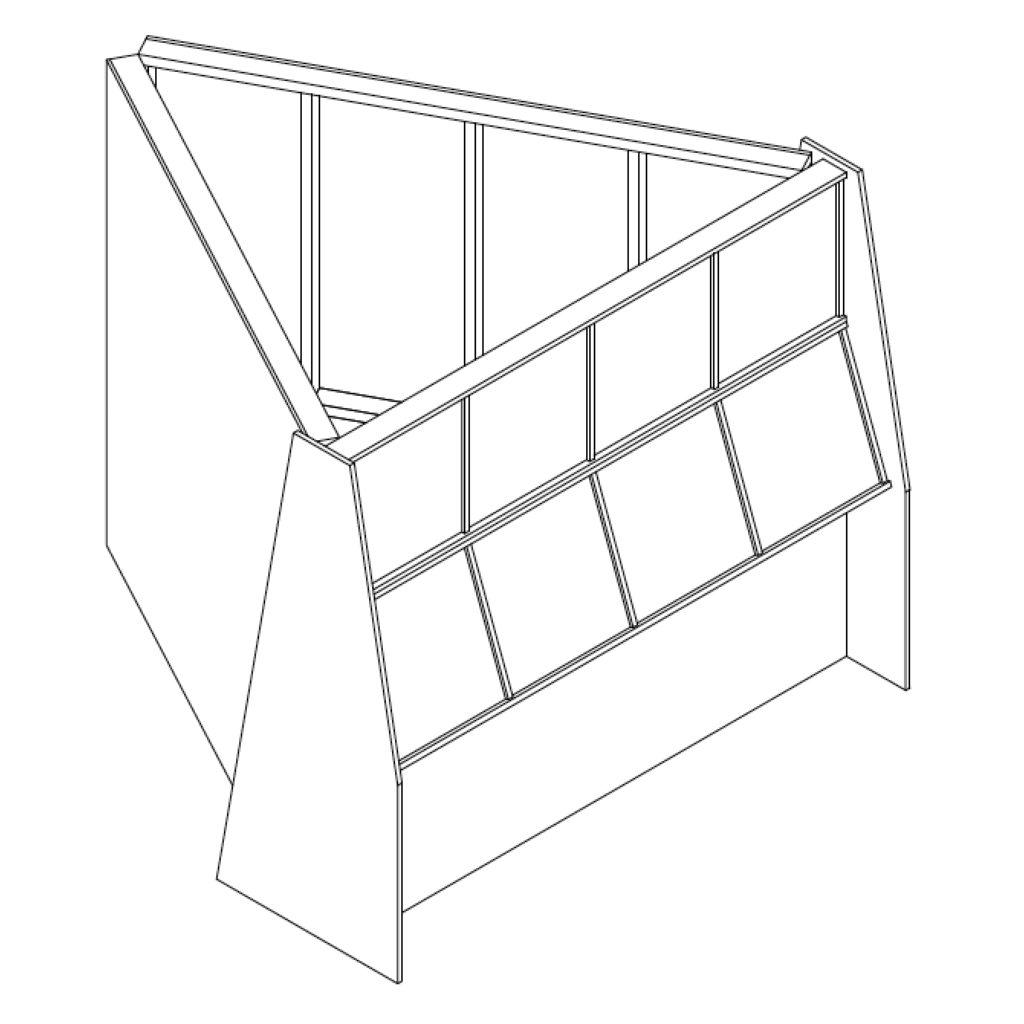If you knew the likely cause of your death, what would you do? Mortorious counts the number of deaths in the United States, by cause, from the opening of the Gate for Burning Man 2019. Digital counters reveal mortality statistics along with 15 “cause-of-death” posters for some common and uncommon ways that we will leave this Earthly realm.
—Kerry’s Burning Man Playa Art Application
(Updated July 16, 2019.)
All of my Burning Man playa art projects have intended to provide participants with an experience: Dangerous Games (2007) offered a cooperative game as an alternative to a competitive one, Worthy (2015) and Worthy 2 (2016) publicly revealed participants’ concerns, and Bluster (2018) presented an unusual response to the wind of Burning Man.
Mortorious (2019) shockingly manifests death in the United States by dynamically updating “death counters” as participants view the piece. On average, someone dies in the United States about every 11 seconds, so every minute, five or so counters of the piece will be bumped up, noting someone’s demise in the country. At this rate, it will be nearly impossible to approach the piece and fail to experience someone’s death.
While it would be most effective to reveal national deaths in real time, such data is not available. So instead, the piece uses averages from the CDC’s National Vital Statistics Reports Volume 68, Number 9*. The report’s data can be used for a top-15 list, with the first few lines shown here:
| Number of Deaths per Day | Cause of Death |
|---|---|
| 7,708 | All Causes |
| 1,774 | Heart Disease |
| 1,641 | Cancer/Tumor |
| 465 | Accidents |
However, by poring over the tables, one can find data to support a more editorial approach, such as:
| Number of Deaths per Day | Cause of Death |
|---|---|
| 129 | All Suicides |
| 65 | Suicides by Firearm Discharge |
| 53 | All Homicides |
| 40 | Homicides by Firearm Discharge |
Data for other causes includes death by fire (9 per day), alcohol-induced deaths (98 per day), drug-induced deaths (203 per day), and various other diseases such as Alzheimer’s (332 per day) and Diabetes (229 per day), as well as strokes (401 per day). A table of various causes of suicide gives rates for self poisoning (18 per day) and self suffocation (32 per day). The reports divide some data by gender, which reveals that unintential injuries are the #3 cause of death for men but the #6 cause of death for women. Gender-separate rates are available.
It is tempting to include some exceedingly rare causes that we seem unable to ignore, such as terrorist attacks and mass shootings. We will use actual reported deaths from 2017 for these two topics. During the dates of Burning Man 2017, there were only 5 deaths somewhere in the U. S. due to mass shootings. The Mass Shooting counter will reflect that history. Also, during Burning Man 2017 there were no deaths in the U. S. from terrorist attacks, and so the Terrorism counter will remain zero during the entire event.
Here is a table of the selected causes of death that will be included in the piece:
| Number of Deaths per Day | Cause of Death |
|---|---|
| 7,703 | All Causes |
| 1,773 | Heart Disease |
| 1,640 | Tumors/Cancer |
| 439 | Respiratory Disease |
| 177 | Accidents — Involving Drugs |
| 110 | Accidents — Involving Vehicles |
| 99 | Accidents — Involving Falls |
| 332 | Alzheimer's |
| 229 | Diabetes |
| 129 | Suicide |
| 93 | Firearms — Male Victim |
| 16 | Firearms — Female Victim |
| 53 | Homicide |
| 9 | Fire/Flame |
| <1 | Mass Shootings |
| 0 | Terrorism |
Each cause of death will be represented by a “poster”. Here is the poster for Heart Disease.

Collaboration
The collaborative nature of the piece is made apparent by the varied art that is inspired by each of the death counters’ causes. My model for a collaborative art project is Marv Newland’s animated short “Anijam” (YouTube). The overall short holds together because Marv Newland insisted that each segment return to the character Foska, but the short supported and motivated creativity because each animator was given the freedom to make whatever they wanted.
For this piece, it must be clear that each contributor’s art piece counts deaths in some obvious category. Physically, the location of each counter is determined by pre-existing electronics, but nearly anything that exposes the counter is acceptable.
Mortorious is constructed by repurposing Worthy 2.

Mortorious will keep the counters but eliminate the push buttons. Each of the 16 counters will be associated with a panel that is 10.2” wide and 22.5” high. Panels in the top row have a death counter closer to the bottom, while panels in the bottom row have death counters that are closer to the top. Each counter is 5” wide and 1.4” high and is 16.5” from the more distance edge.

While each panel has the same size, if the subject allows, it’s possible to merge adjacent panels into a square double-counter panel that is 22.5” wide. As long as the “a” panel is on the left and the “b” panel is on the right, the merged panels will be printed on a single, 22.5” × 22.5” piece of media, and the “gutter” between the merged panels will be eliminated. The two counters will remain, separated by 7.4”.

It is not possible to merge a “b” panel on the left with an “a” panel on the right because a 3/4” wooden separator remains between the two.
Images of all artwork will be scanned and printed on Satin Cloth, which will be mounted behind acrylic, and so all mediums are supported. Artists are free to create pieces of any size since scaling is possible during reproduction. If one wants to make a digitial design, we should discuss the exact dimensions. Power at 120-volt AC is available, as well as a few amps of 12-volt DC.
The Process of Creating Art
While creating many of my pieces I’ve reread Chapter 7 of Scott McCloud’s book Understanding Comics. (Buy it or see pp. 162–184 of link.)
Mr. McCloud proposes that the process of creating art follows six steps. An artist may not be aware of these steps, and when they begin learning about the creation of art they may not even follow all of the steps.
- Idea/Purpose: Reveal the relative rates of different causes of death.
- Form: Electronic sign and two murals.
- Idiom: Concert posters, movie posters, comics, paintings.
- Structure: Equal-size panels, clearly indicate the cause of death.
- Craft: Wood construction, paint, electronics, program design.
- Surface: Overall wood finish TBD.
The construction of Mortorious uses three 6-foot high wall segments arranged around a triangular floorplan. One wall segment displays the 16 small electronic cause-of-death posters, while the two other wall segments hold murals and serve the practical purpose of stabilizing the piece against the wind and helping to secure the piece’s gasoline generator.

* Kochanek KD, Murphy SL, Xu JQ, Arias E. Deaths: Final data for 2017. National Vital Statistics Reports; vol 68 no 9. Hyattsville, MD: National Center for Health Statistics. 2019.